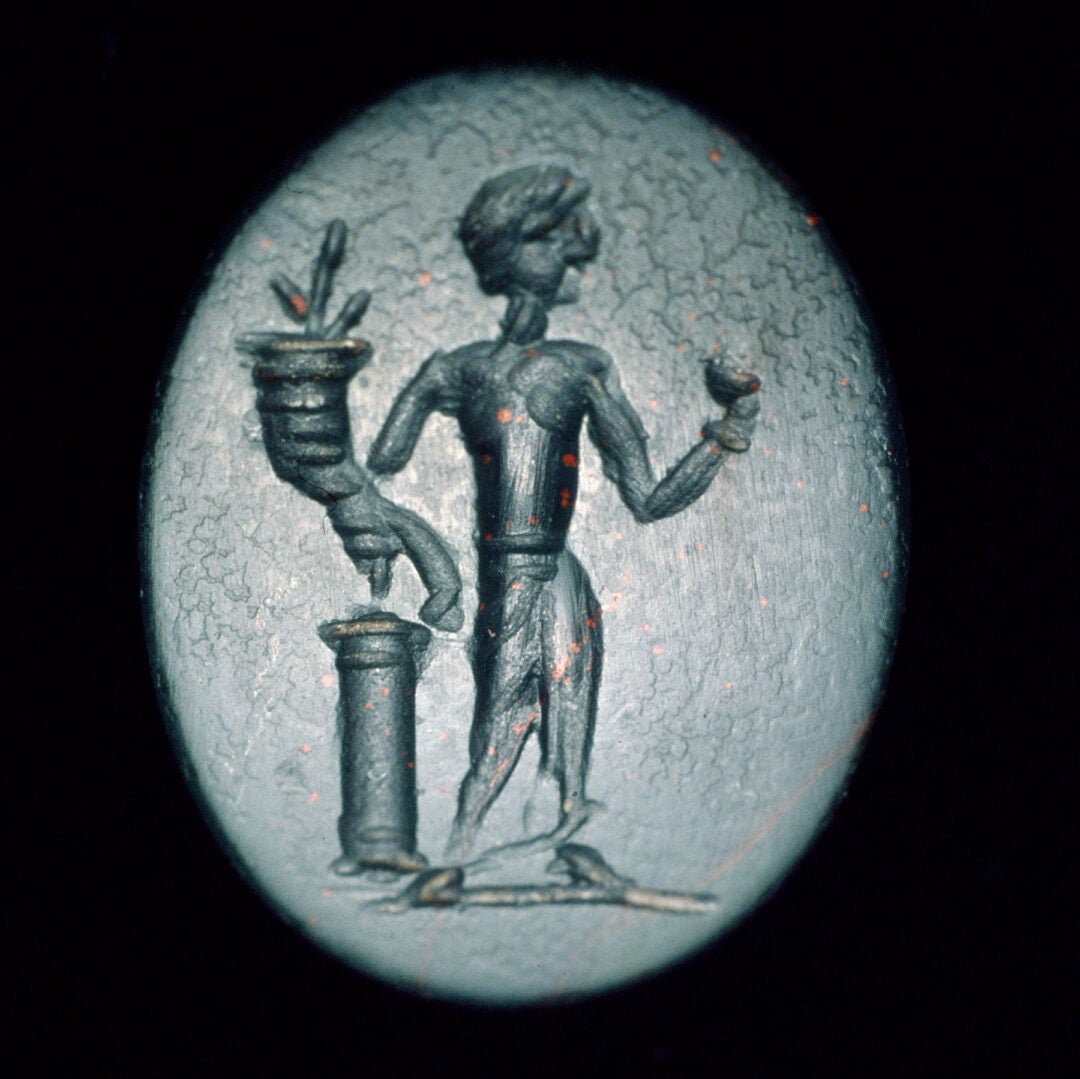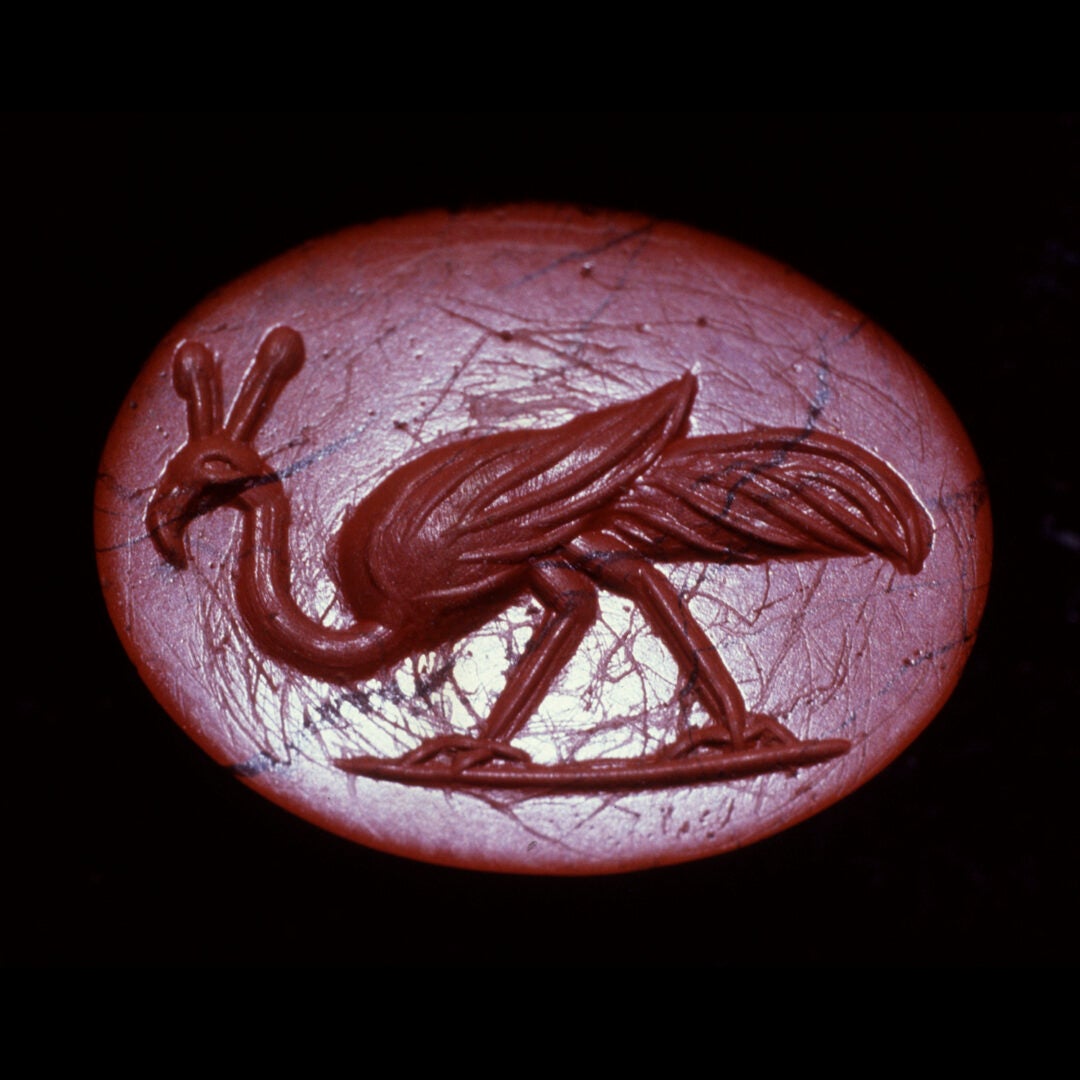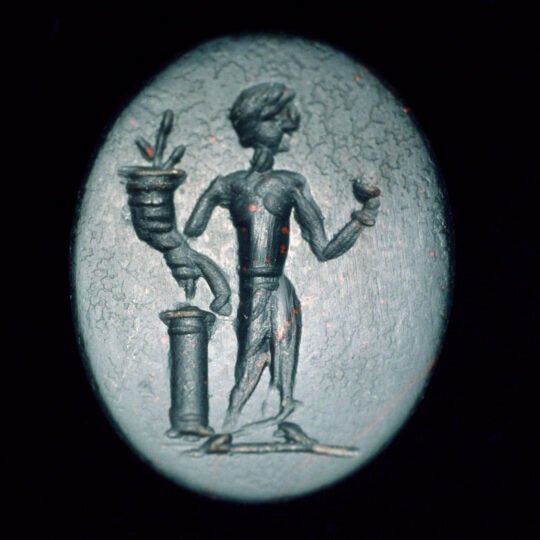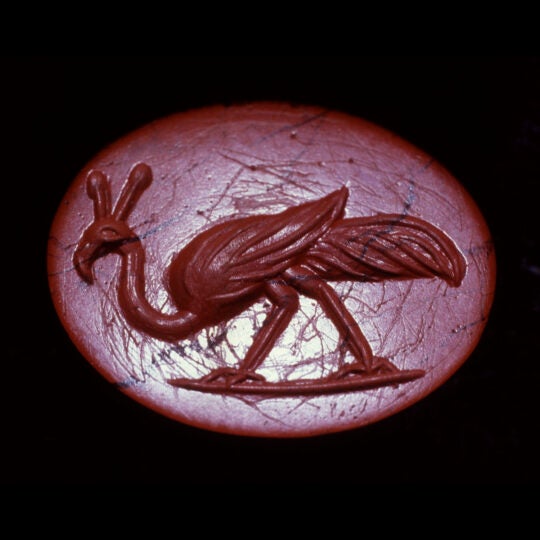Small stones with engraved designs and sometimes inscriptions were used widely in the ancient world. At times used for personal decoration, they were also used as amulets, or as seals. Amulets provided a protective or magical function, guarding the wearer against illness, disaster, or demons, while seals served as a form of identification.
Stones engraved as seals were intended to leave an impression when pressed into wax, clay or metal. They are in some ways the equivalent of a modern credit card since they were used to show that the owner of the seal was accepting responsibility in a specific transaction, or claiming ownership of a particular object.
One can still buy kits in stationery stores that include sealing wax and a metal stamp with one’s initial. Up until fairly recently seal impressions on wax were used, for example, to seal documents and letters. Ancient seals were used in much the same way. Legal transactions, such as contracts, were usually written on papyrus. When the contract was completed, and all witnesses had signed, the papyrus would be rolled up, folded, and tied with string. Pieces of clay would be put across the strings, and each witness would stamp one of the pieces of clay with their seal. This would ensure that the contract would not be tampered with.
Many carved stones that survive, including those used as seals, were pierced so that they could be worn. Somet were set into rings. The two shown here are set into a ring and pendant, respectively.
The word “intaglio” refers to the fact that the carving is cut into the surface of the stone so that when a seal impression is made, the design stands out from the surface of the wax or clay. Although it may seem in these photographs that the design is standing out from the surface (in “bas relief”), what you may see is an optical illusion–the designs are actually engraved.
Roman Intaglio

Roman Signet Ring with Clasped Hands

Roman Seal with Bird

Inscriptions and Artifacts in the USC Archaeology Research Center
- Etruscan Lion Plaque Pendant A gold pendant from 650-600 B.C.
- Statue of Isis A gold statue of the Egyptian goddess Isis.
- Deity on a Bull A small sacred figurine from the area of Syria-Palestine.
- Egyptian Ushabti An ancient Egyptian representation of a mummy.
- Sasanian Seals Seals with animal designs from ancient Iran.
- Seals Assorted seals.
- Coins Caesar Vespasian and Alexander III Coins.
- Bullae Roman Period Bullae (Seal Impressions).
- USC Archaeology Research Center Web Site
Article Categories
Non-Biblical Ancient Texts Relating to the Biblical World: Non-biblical inscriptions and documents from ancient times that improve our understanding of the world of the Bible.
Biblical Manuscripts: Images and commentary on ancient and medieval copies of the Bible.
Dead Sea Scrolls: Images and commentary on selected Dead Sea Scrolls manuscripts.
USC Archaeology Research Center: Images of artifacts from the teaching collection of the University of Southern California.


